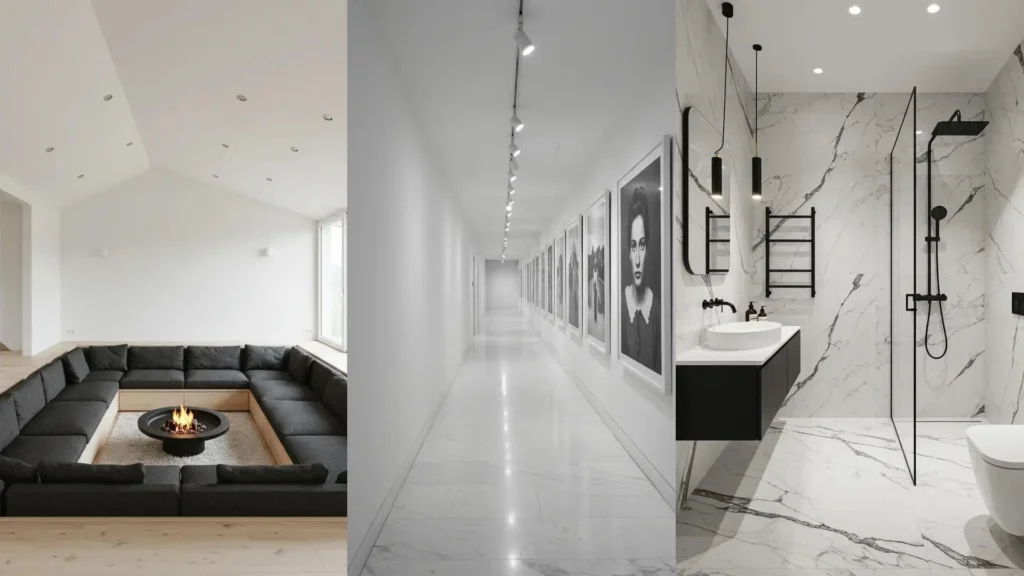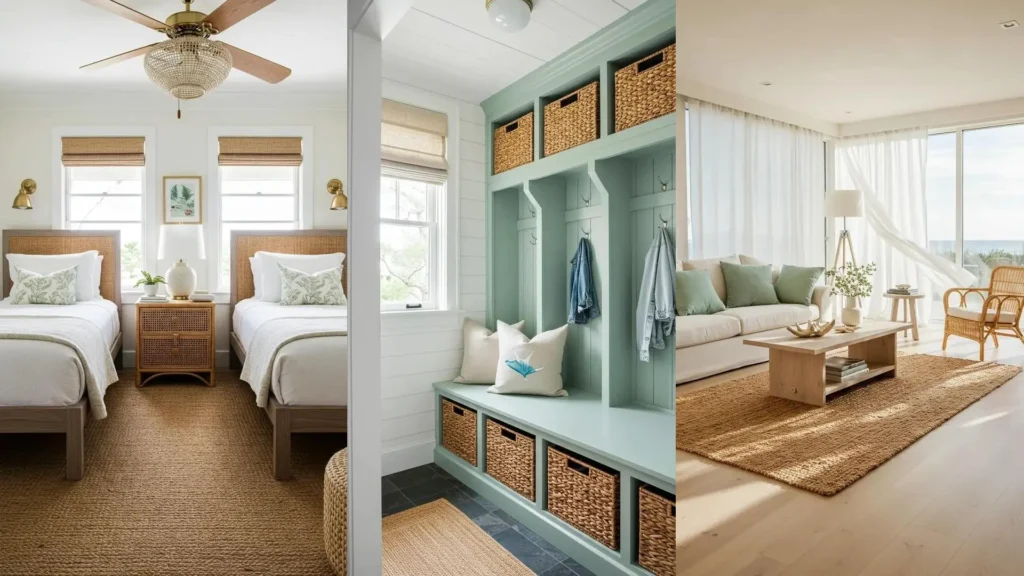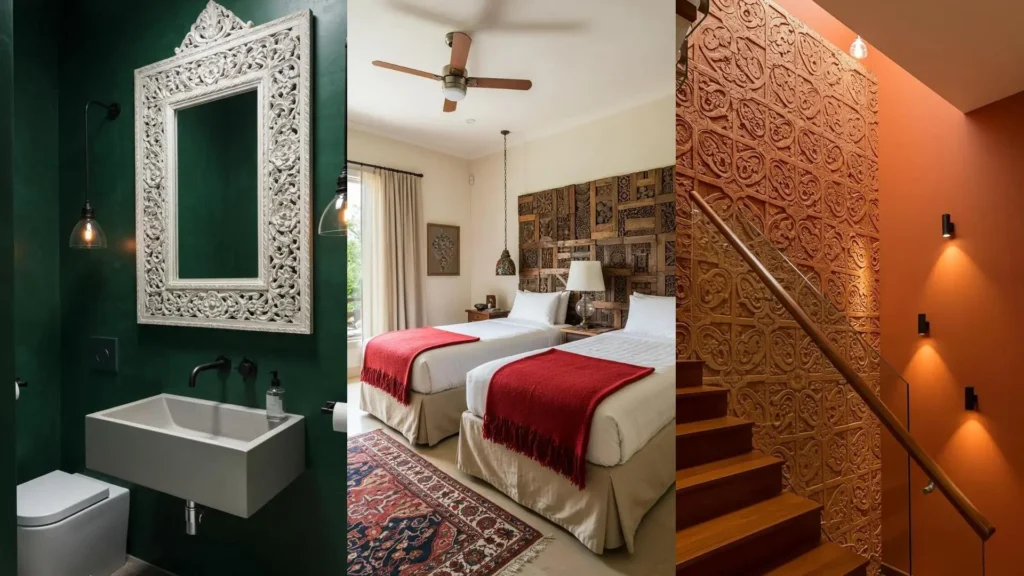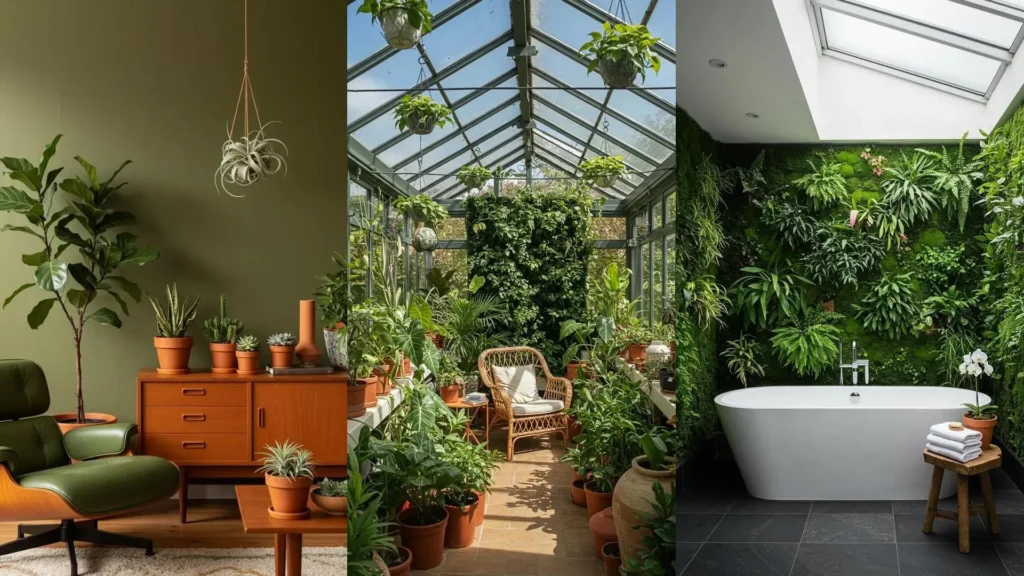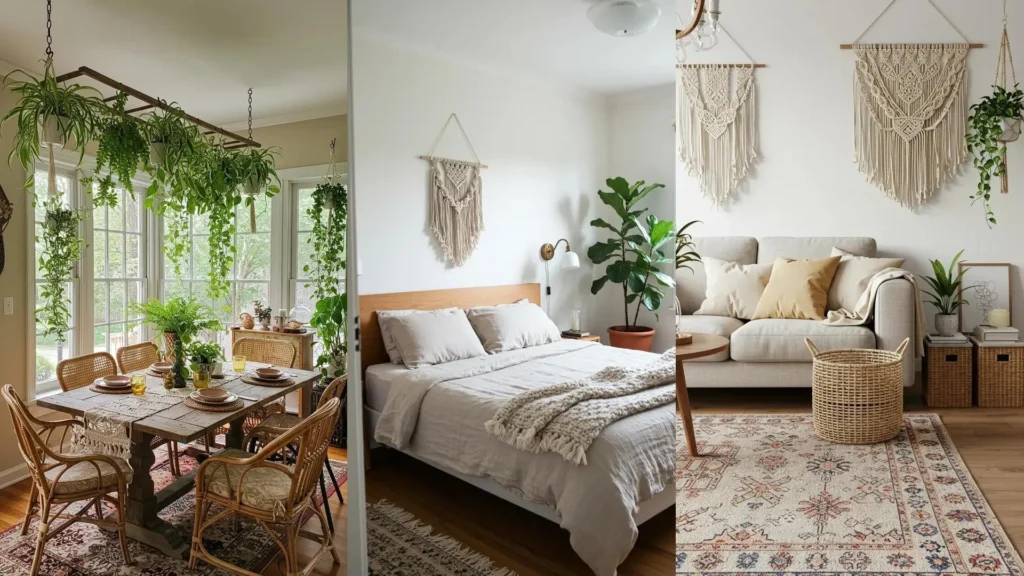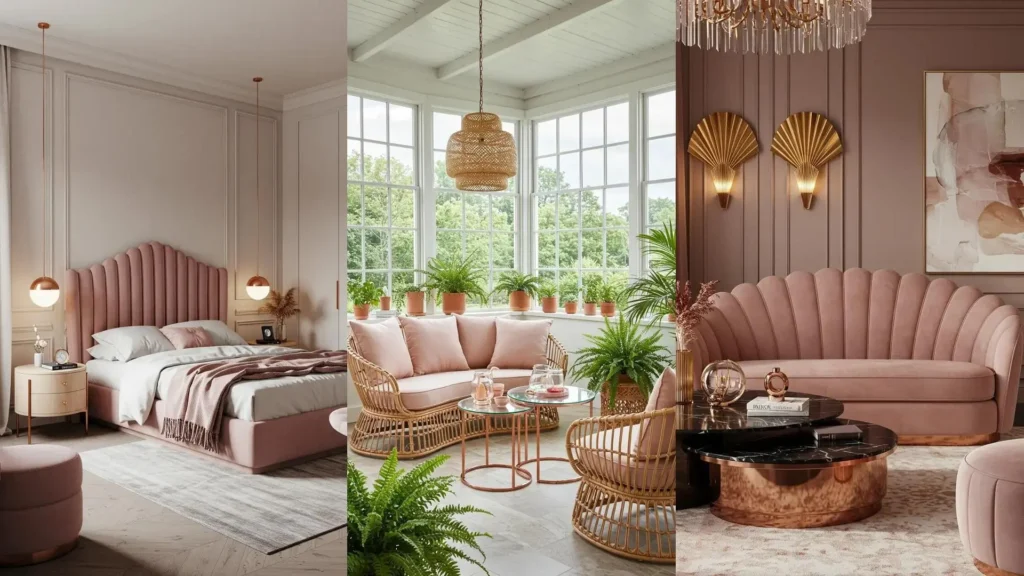There is a profound sense of calm and clarity that comes from a black and white interior.
It’s a palette that asks you to look closer—to appreciate the form of a chair, the texture of a rug, the way light falls across a room.
By stripping away the distraction of color, you give yourself the freedom to focus on what truly matters: clean lines, thoughtful balance, and a feeling of intentional peace.
This isn’t about creating a space that’s cold or stark, but one that is confident, curated, and deeply restful.
1. The Art of Architectural Scale
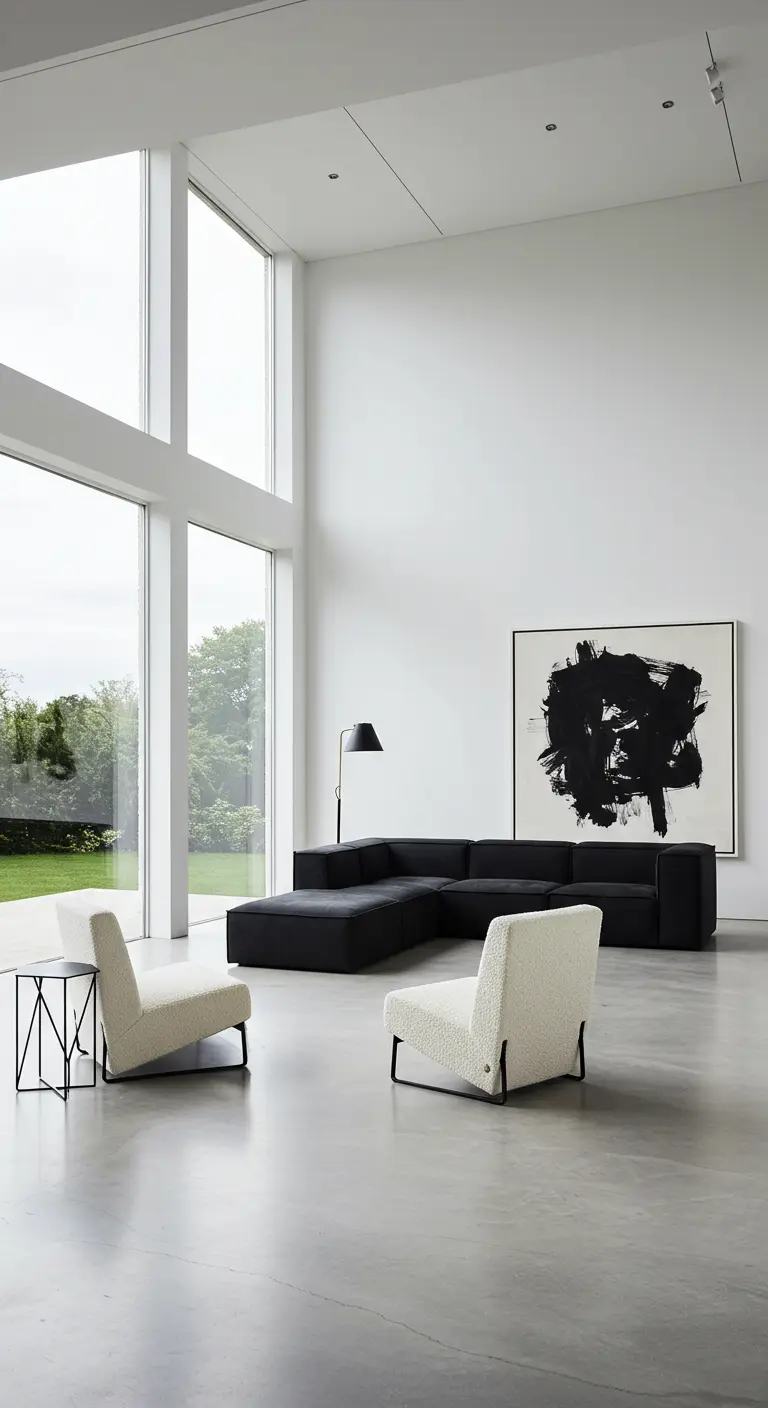
In a room with grand, high ceilings, use oversized art to create a focal point that feels proportional to the space.
Here, the large-scale abstract painting doesn’t compete with the windows; it balances them.
Ground the vastness with a tightly arranged seating group to foster intimacy.
Soften the sharp, minimalist lines with textured fabrics like bouclé or thick wool on the chairs, preventing the room from feeling cold.
2. The Uninterrupted Island
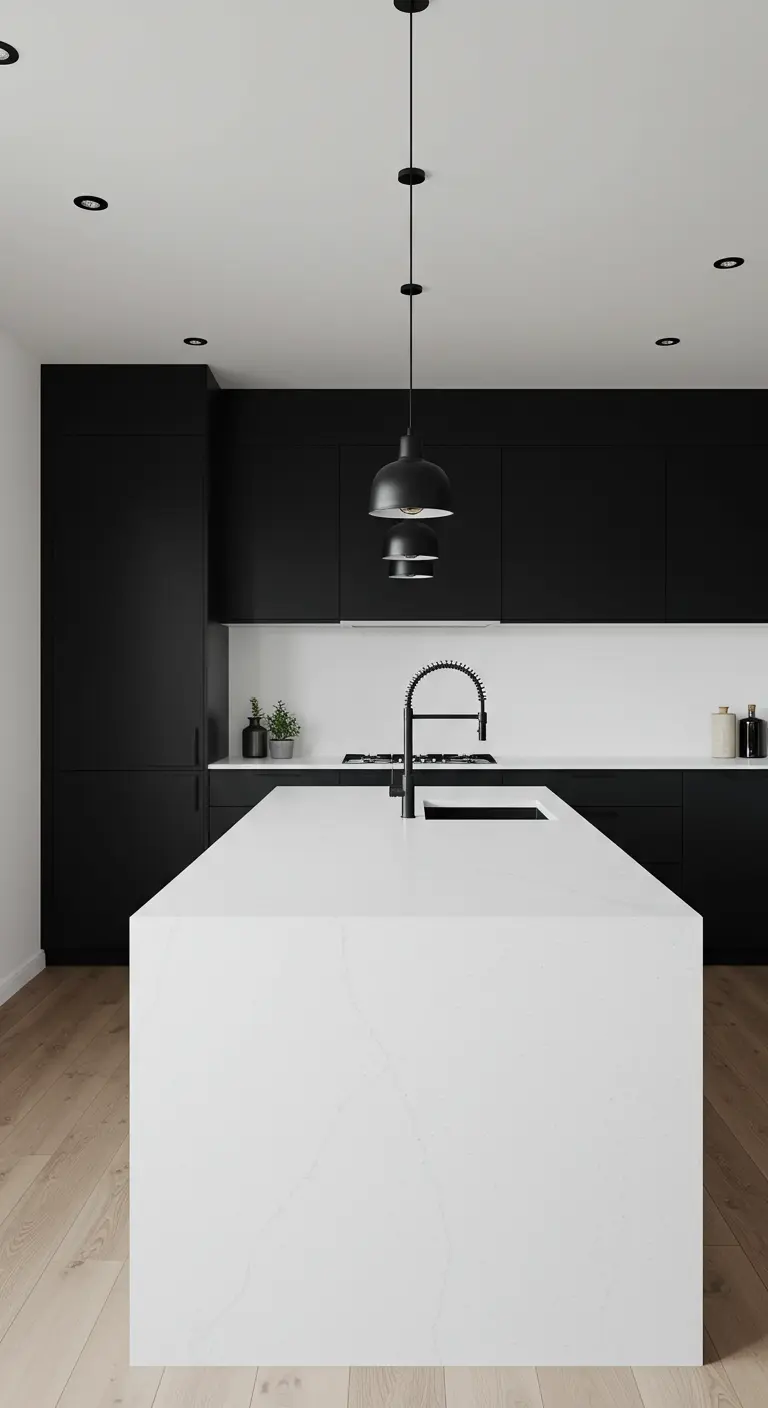
Create a seamless, monolithic focal point in your kitchen with a white waterfall island.
By extending the countertop material down the sides, you achieve a clean, sculptural block that minimizes visual clutter.
Pair it with handle-less, matte black cabinetry for an even more streamlined effect that feels both modern and timeless.
This kind of high-contrast design makes a powerful statement without needing excessive decoration.
3. Restful Simplicity, Elevated
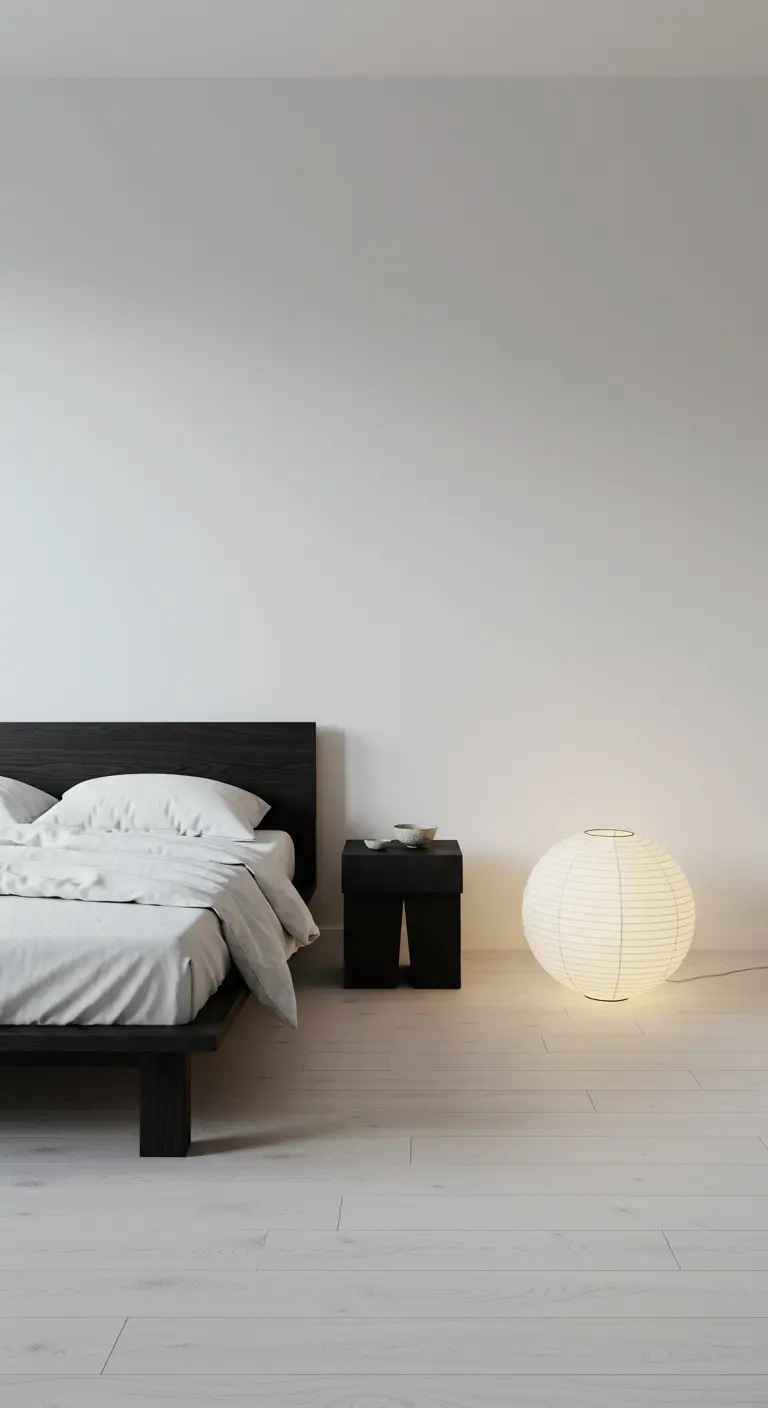
Establish a sense of calm in the bedroom by choosing a low-profile bed frame, which visually grounds the room and enhances the feeling of space.
Introduce soft, ambient light with a single, sculptural light source like a Japanese paper lantern.
This avoids the harshness of overhead lighting and doubles as a piece of art.
Even in a minimalist palette, texture is key: the grain of the dark wood and the soft crumpled linen add warmth and prevent sterility.
4. Dynamic Movement with Marble

Instead of a plain white wall, use large-format marble-effect tiles to introduce pattern and movement that feels organic and luxurious.
Select tiles with bold, continuous veining to turn your walls and floor into a single, cohesive piece of art.
Anchor the look with matte black fixtures—the modern, graphic quality of the tapware and shower frame provides a perfect counterpoint to the classic stone.
A frameless glass shower panel ensures the dramatic tile remains the undisputed star.
5. The Focused Workspace
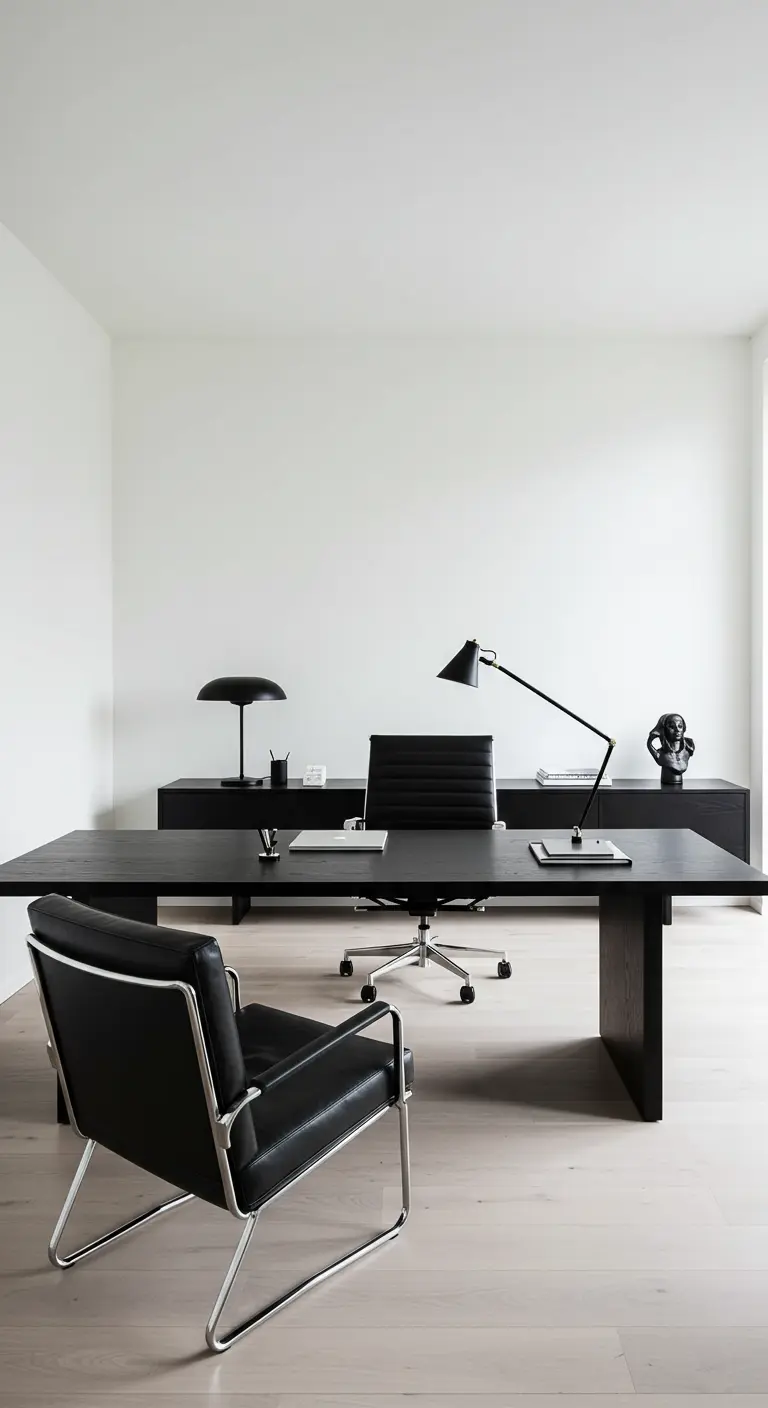
Design a home office that promotes clarity and concentration by committing to a strictly monochromatic palette.
The lack of color reduces visual noise, allowing you to focus on the task at hand.
Choose furniture with strong, clean lines and prioritize function, like a large, uncluttered desk and effective task lighting.
A single piece of classic design, like the tubular steel chair, adds personality and historical weight without disrupting the minimalist calm.
6. The Art of Evening Ambiance

Create an instantly intimate and dramatic dining room by embracing darkness.
Painting the walls a deep, matte black—including the trim and molding—creates a sophisticated, cocooning effect.
Keep the space from feeling oppressive by choosing a tabletop in a light, reflective material like white marble.
The sculptural chandelier then becomes the primary light source and a striking focal point, perfect for casting a warm glow over evening gatherings.
7. Texture as the Main Event

In a minimalist entryway, let texture do the talking.
A feature wall of black vertical wood slats adds incredible depth, rhythm, and shadow play, transforming a flat surface into a dynamic element.
This approach adds warmth and architectural interest without relying on color or pattern.
Contrast the rich texture with a smooth, floating white console and a simple round mirror to maintain a clean, uncluttered feel.
8. Soft Loft, Strong Structure
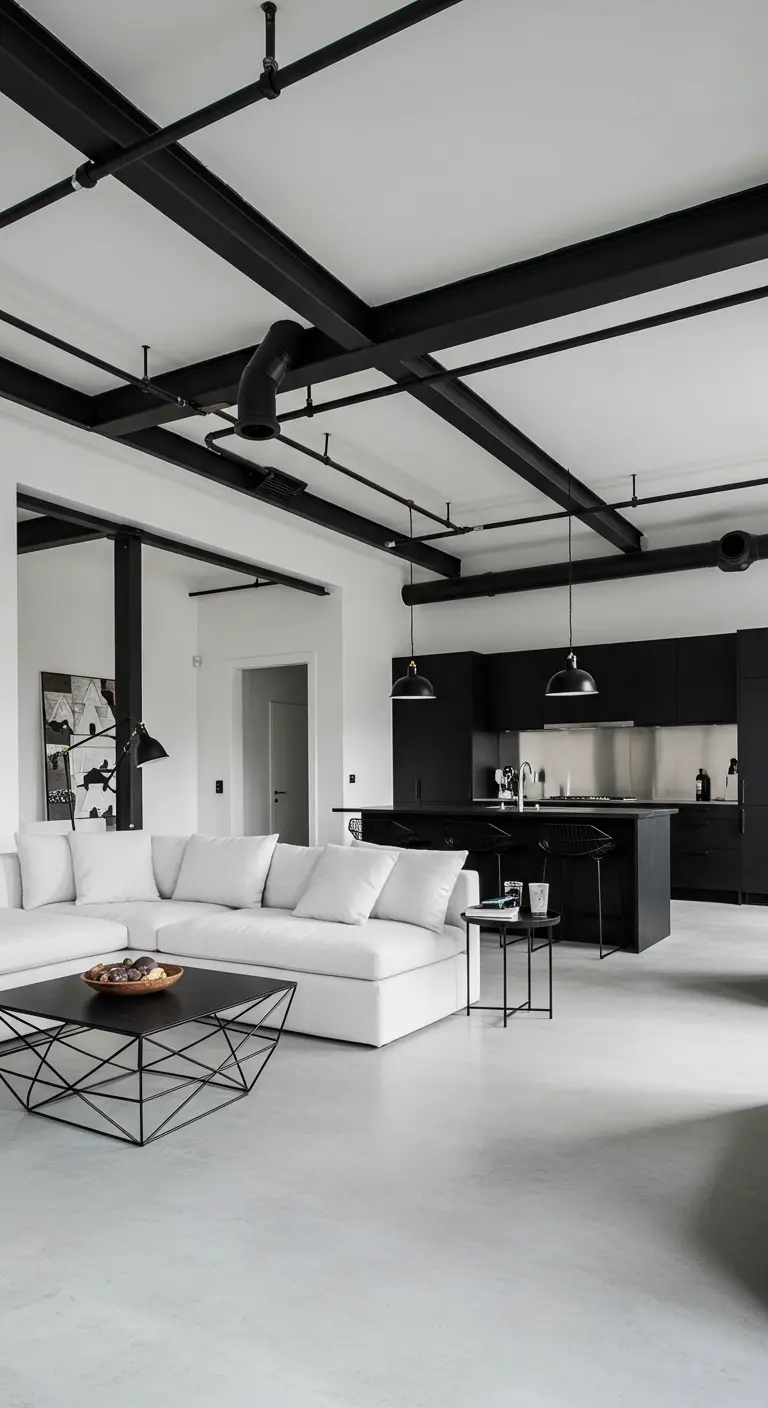
Balance the raw, hard-edged feel of an industrial loft by introducing oversized, soft furnishings.
A large, plush white sectional directly contrasts the black-painted steel beams and exposed ductwork, creating a beautiful tension between hard and soft.
This pairing makes the industrial elements feel intentional and architectural, rather than unfinished.
A geometric wire-frame coffee table subtly echoes the overhead structure, tying the whole look together.
9. The Modern Conversation Pit
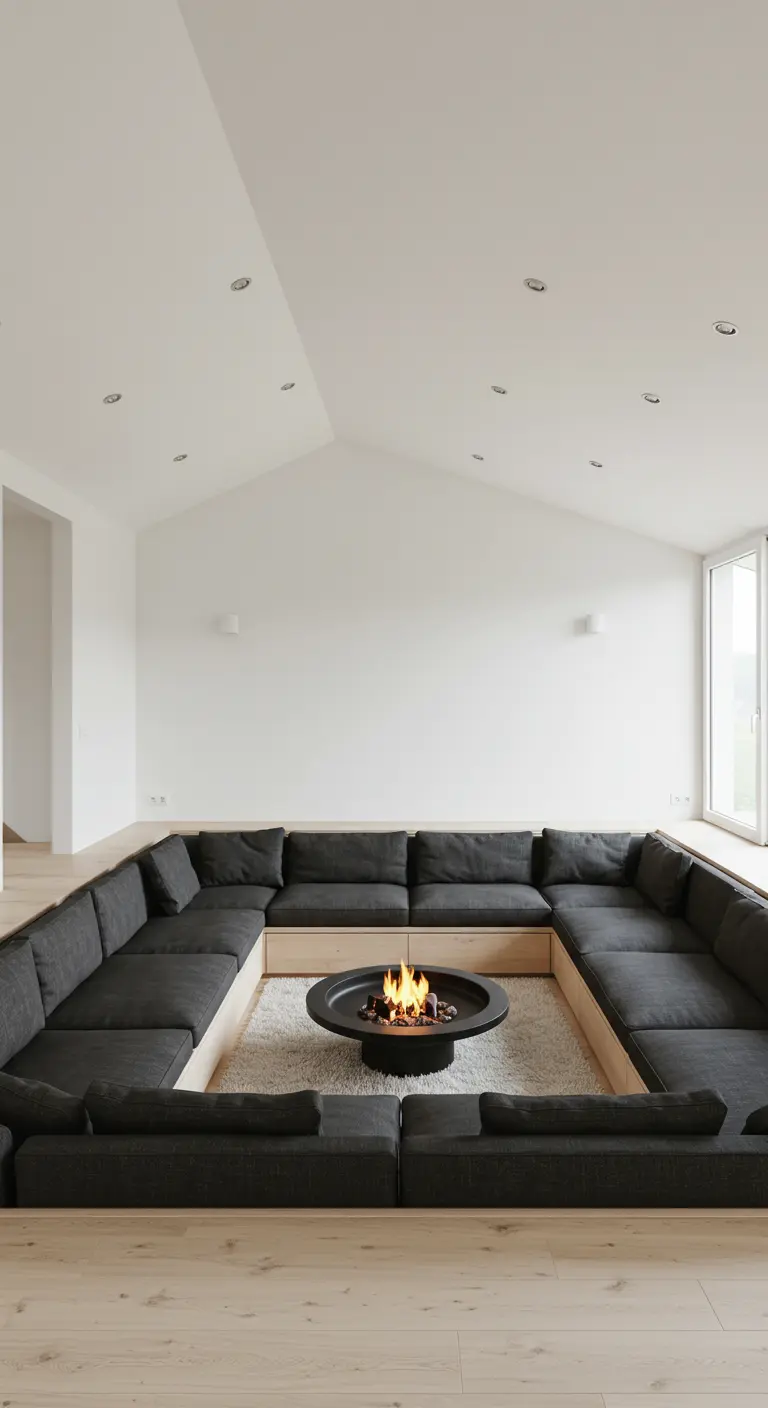
Create an unparalleled sense of intimacy by designing a sunken living area.
This architectural choice defines a distinct zone for gathering that feels cozy and secluded, even in an open-plan home.
Make a central fire pit the focal point to encourage connection and add literal and figurative warmth.
By keeping the color palette restrained to charcoal and white, you allow the unique form of the space to take center stage.
10. The Sculptural Anchor
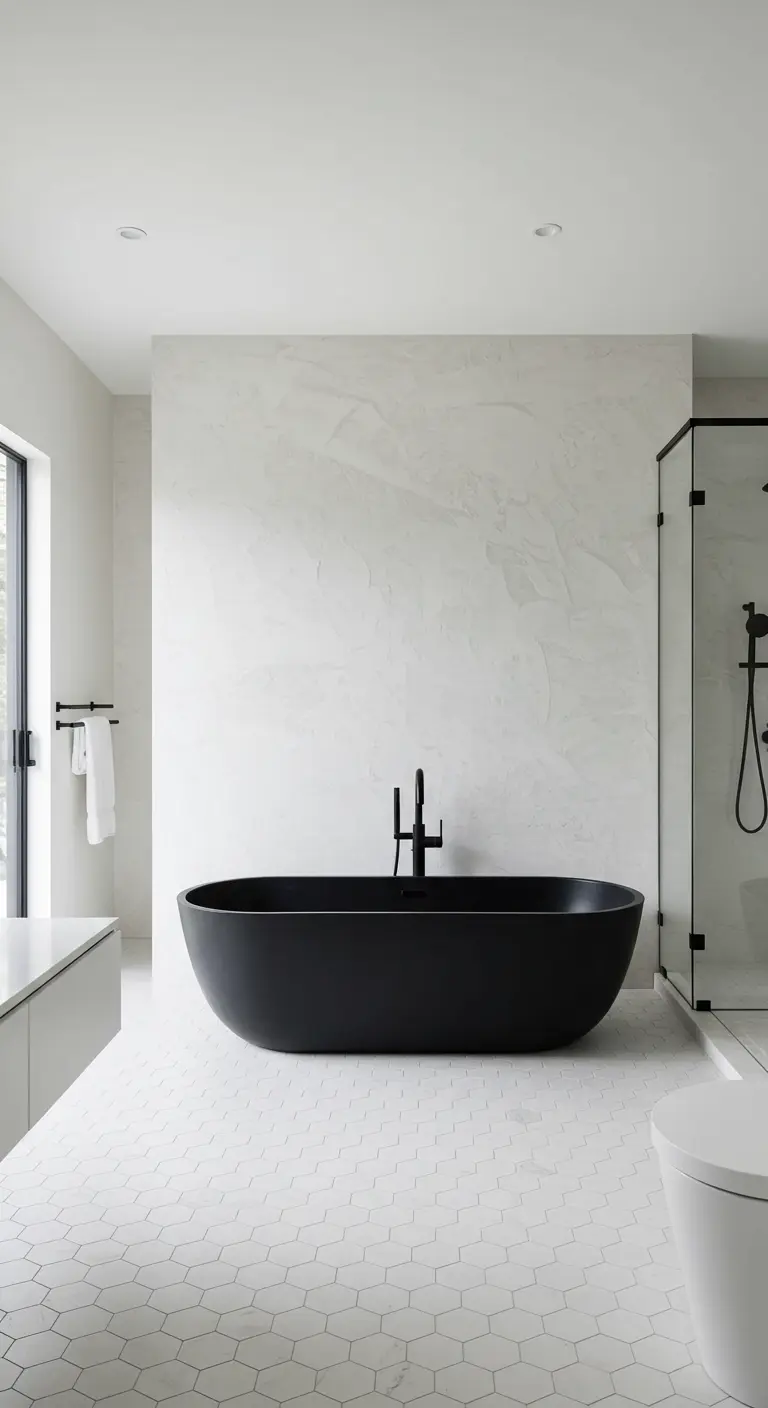
Turn a functional object into the undeniable centerpiece of your bathroom.
A matte black freestanding tub acts as a piece of sculpture, its dark, curved form anchoring the entire space.
Set it against a backdrop of subtle texture, like a hand-troweled plaster or limewash wall, which adds depth without competing for attention.
The contrast with the small, white geometric floor tiles makes the tub’s shape even more pronounced and impactful.
11. The Negative Space Library
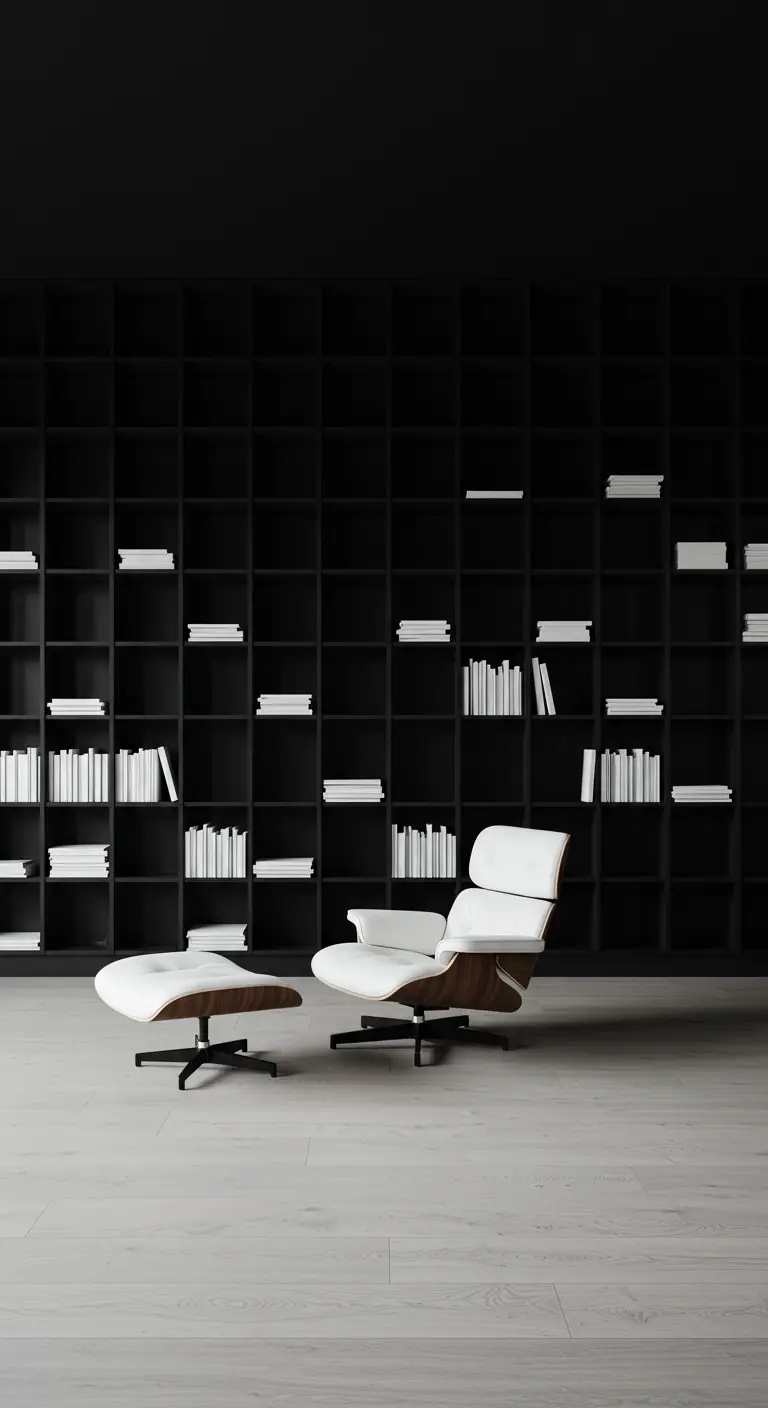
Rethink how you style your bookshelves by embracing negative space.
Instead of filling every shelf, this floor-to-ceiling unit uses strategic gaps to create a graphic, rhythmic pattern.
The white spines of the books pop against the black shelving, turning the collection itself into a design element.
A single, iconic lounge chair in a contrasting white offers a comfortable and stylish spot to enjoy the curated library.
12. Grounded Cabinetry, Airy Uppers
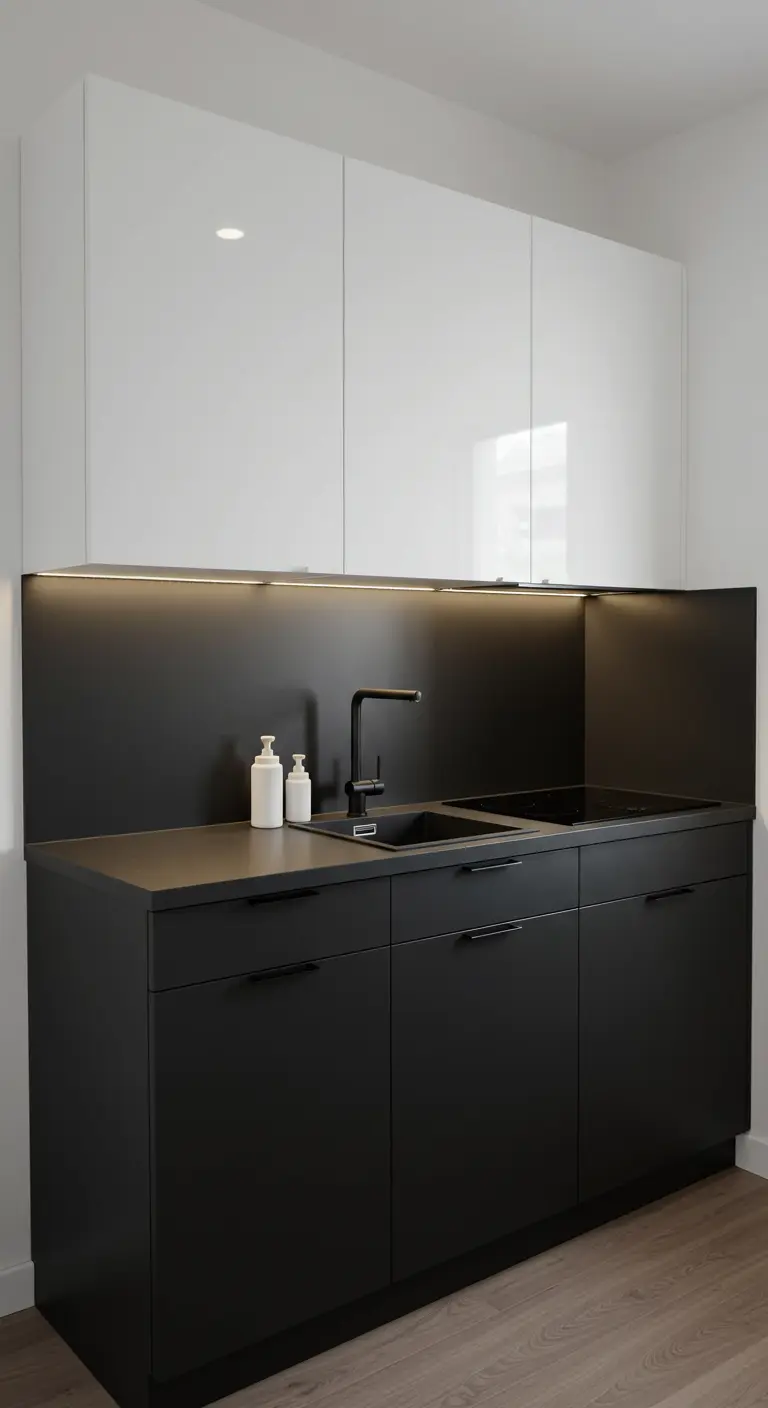
Visually expand small kitchens with a clever two-tone cabinet strategy.
Use dark, matte black for the base cabinets; this grounds the room and makes the lower half recede.
Then, use glossy white for the upper cabinets. The reflective finish bounces light around and draws the eye upward, making the ceiling feel higher.
This simple trick creates an illusion of spaciousness and light without sacrificing storage.
13. The Graphic Attic Retreat
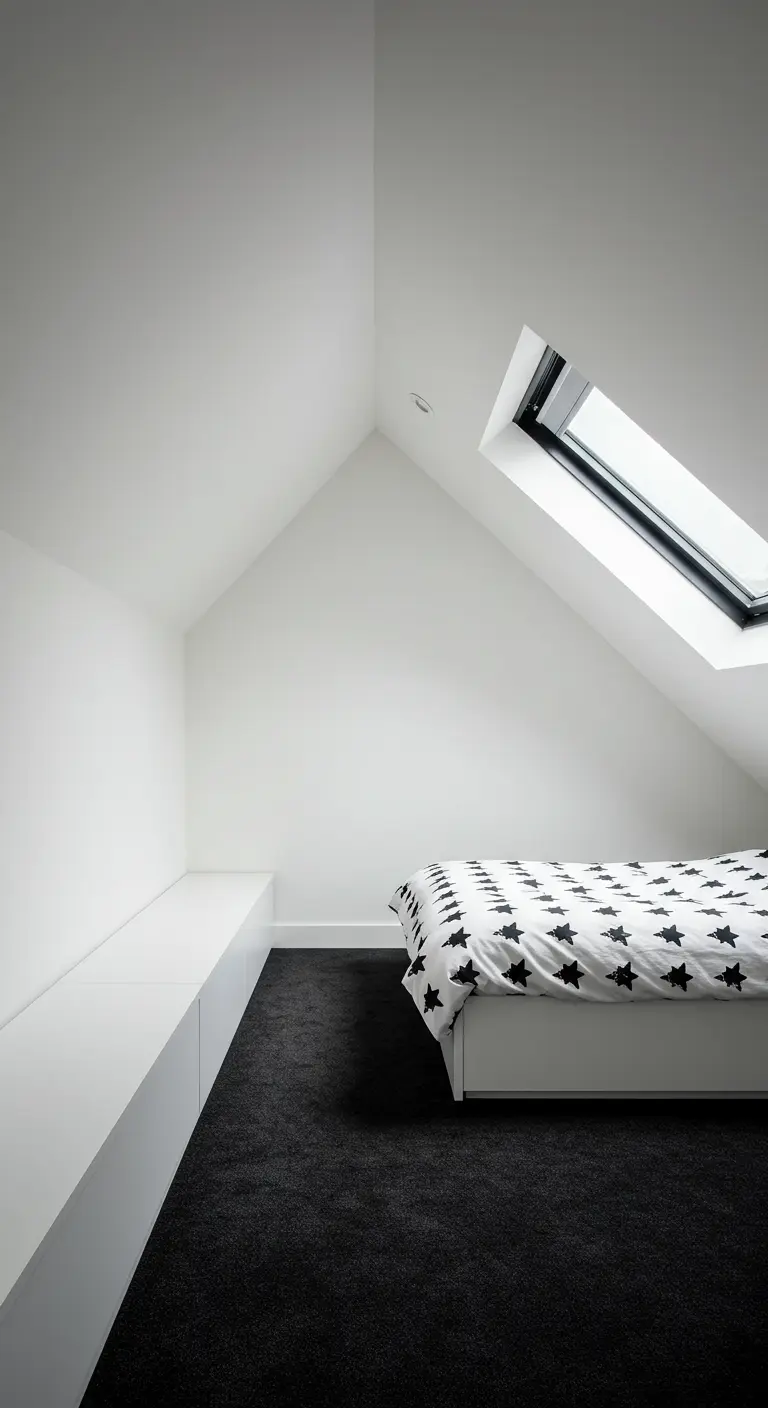
Celebrate the unique, angular architecture of an attic space by using a high-contrast color scheme.
Dark, plush carpeting grounds the room and absorbs light, which in turn makes the crisp white walls and ceiling feel even brighter and more expansive.
Keep furnishings minimal and low to the ground to maximize the sense of height.
A simple graphic pattern on the bedding adds a touch of personality that connects the black and white elements.
14. The Immersive Viewing Room
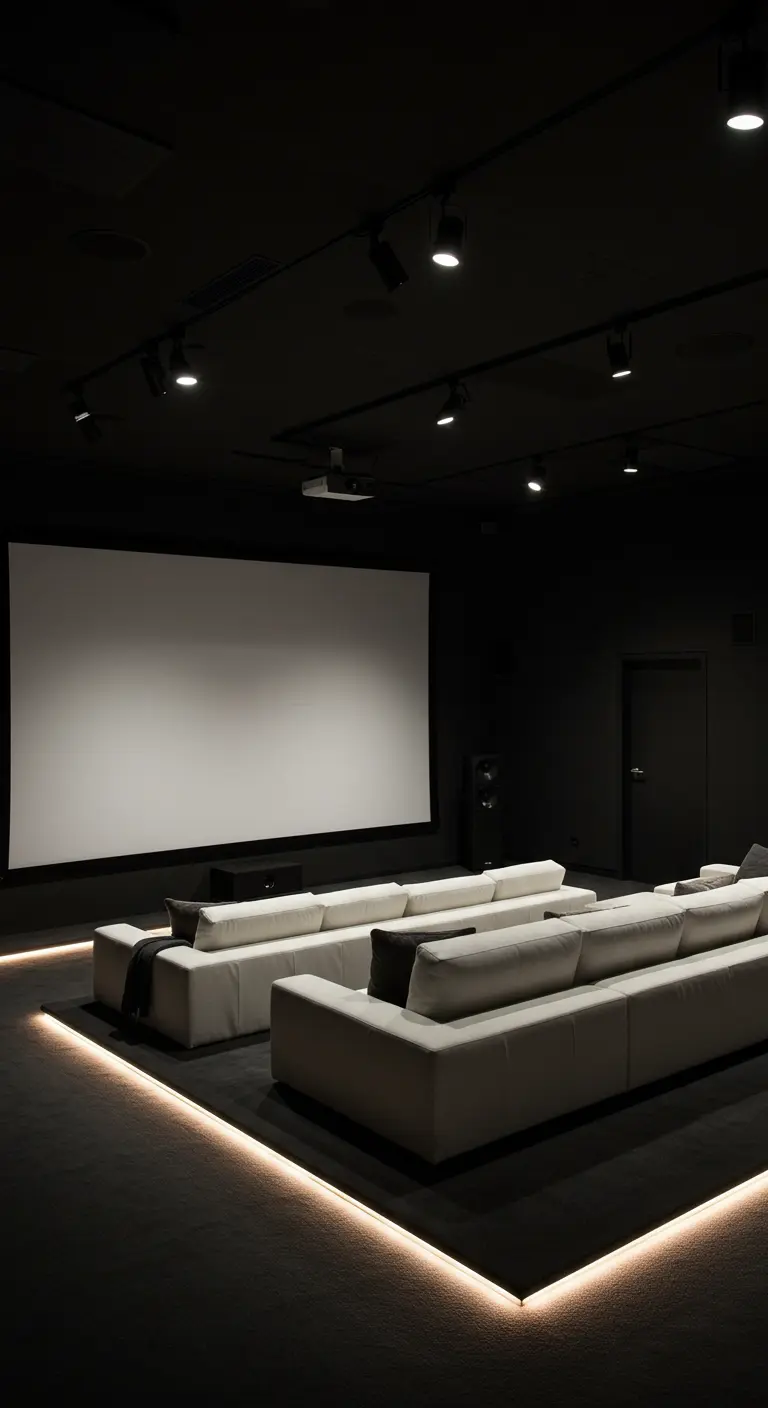
For the ultimate home theater experience, eliminate all visual distractions by painting the walls and ceiling a deep matte black.
This finish absorbs light, preventing reflections and allowing the screen to be the sole focus.
Incorporate soft, indirect lighting along the floor to provide safe navigation and ambiance without creating glare.
Choose sofas in a light color, like white or pale gray, to offer a comfortable contrast and prevent the room from feeling completely cavernous when the lights are on.
15. The Curated Passageway
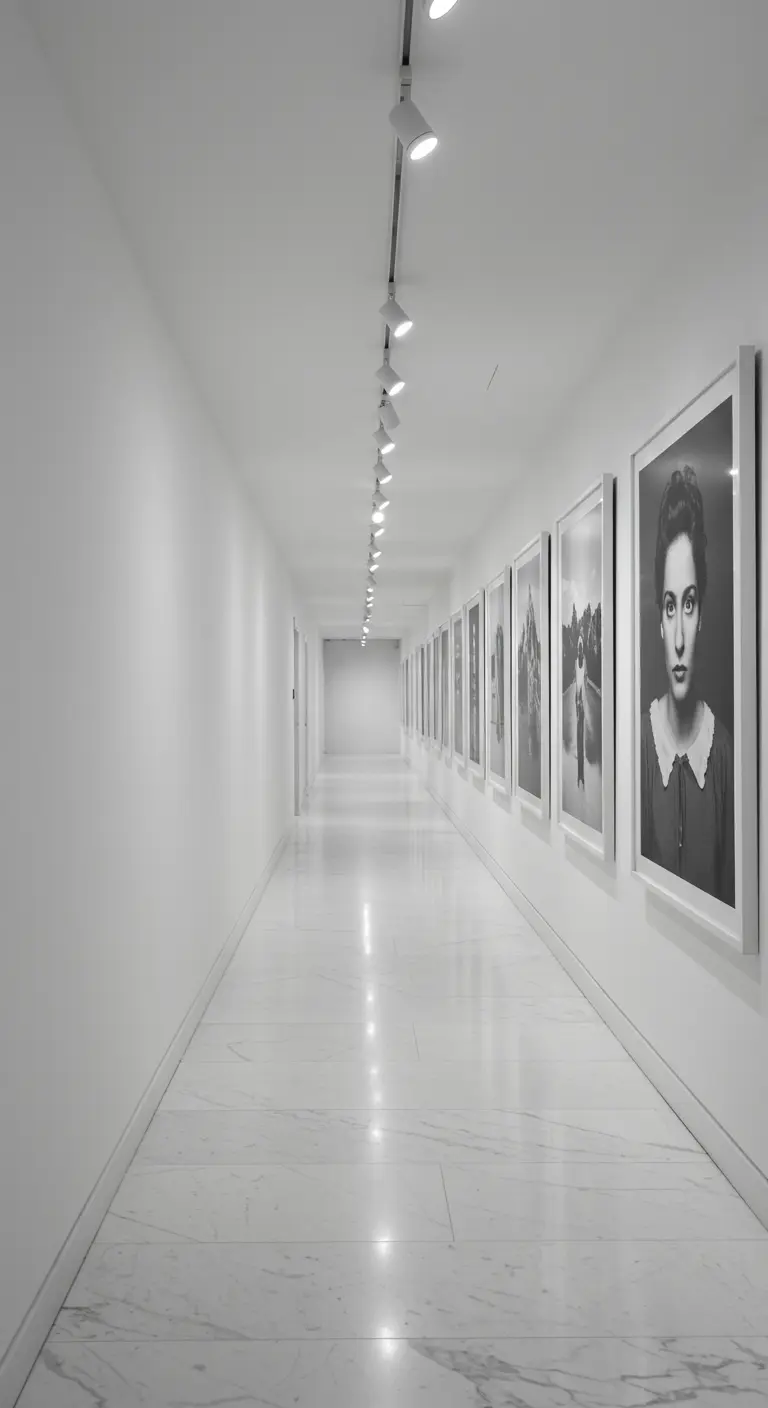
Elevate a simple hallway from a transitional space to a destination by treating it as a formal gallery.
Commit to a disciplined gallery wall by using identical frames, matting, and precise, even spacing.
This creates a powerful sense of rhythm and intention.
Install adjustable track lighting and aim each light directly at the center of each artwork, just as a museum would, to ensure your collection is properly illuminated and honored.
16. The Organized Open-Frame Closet
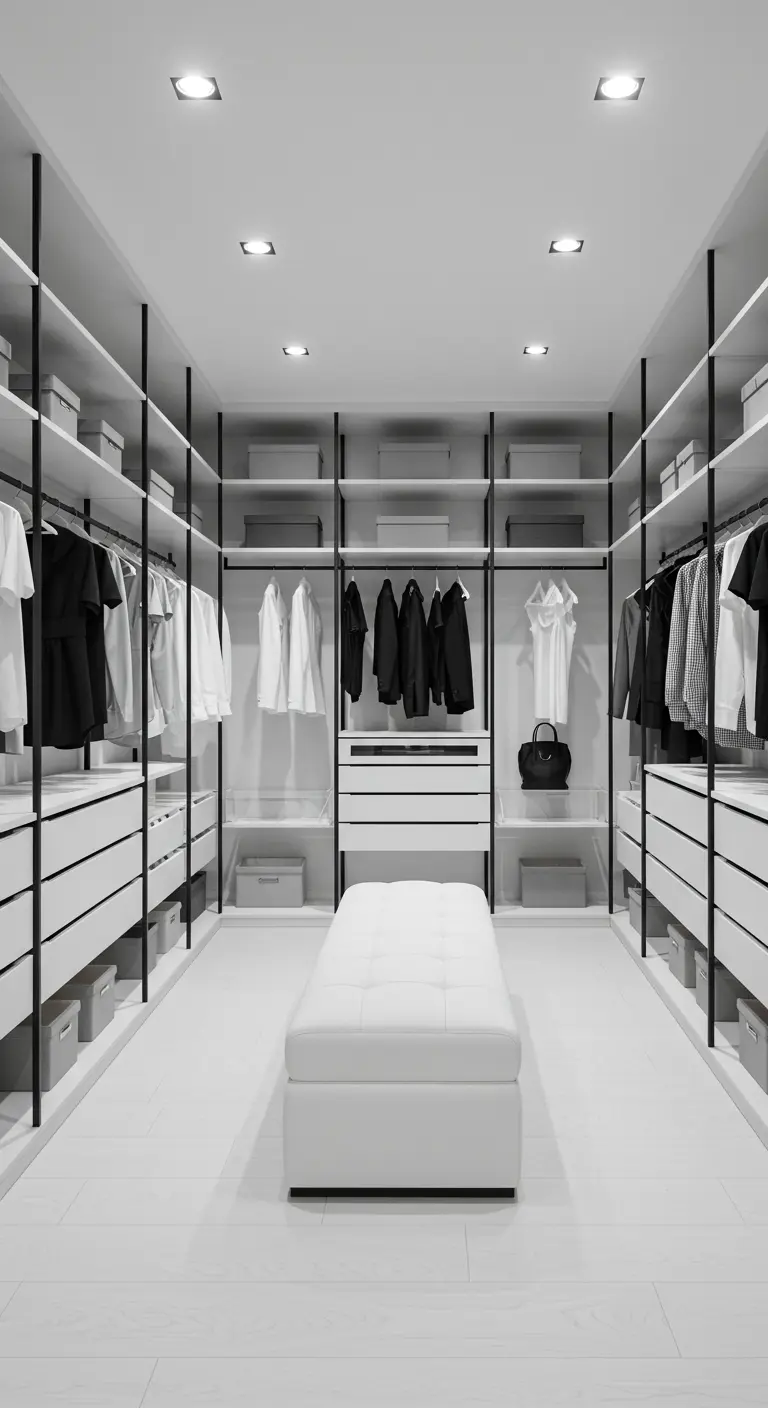
Bring a high-end, boutique feel to your walk-in closet with an open-frame shelving system.
The thin black frames create a graphic, airy structure that feels less heavy than traditional built-ins.
This design choice forces organization, as every item is on display.
Incorporate a mix of hanging rods, open shelves, and closed drawers for versatility, and add a central ottoman for a touch of functional luxury.
17. The Sculptural Room Divider
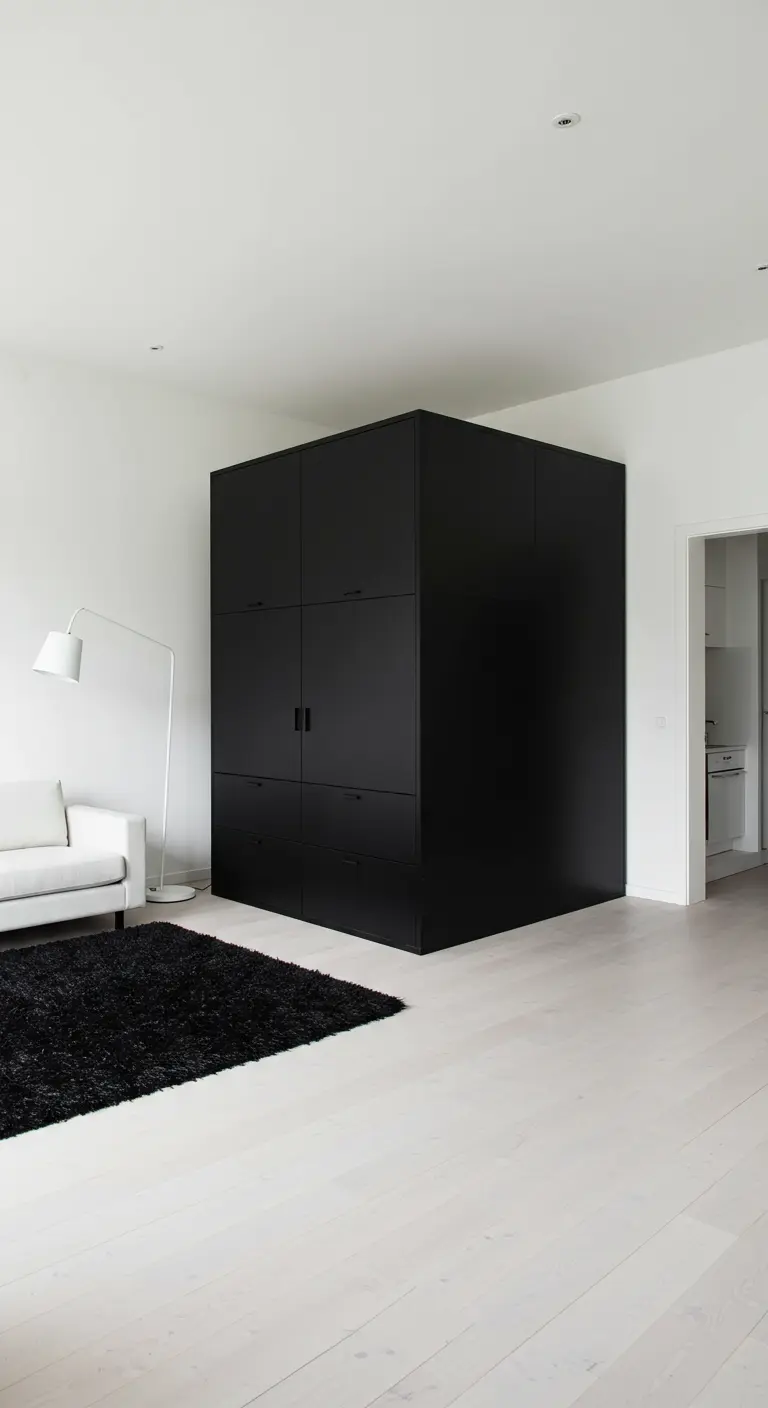
In an open-concept layout, use a bold piece of furniture to define zones without closing off the space.
This freestanding black storage block acts as a functional sculpture, creating a clear boundary between different living areas.
Its monumental form provides a powerful visual anchor while also offering immense, seamless storage.
By keeping the surrounding floors and walls white and unadorned, the unit’s architectural presence is amplified.
18. A Touch of Warm Metal
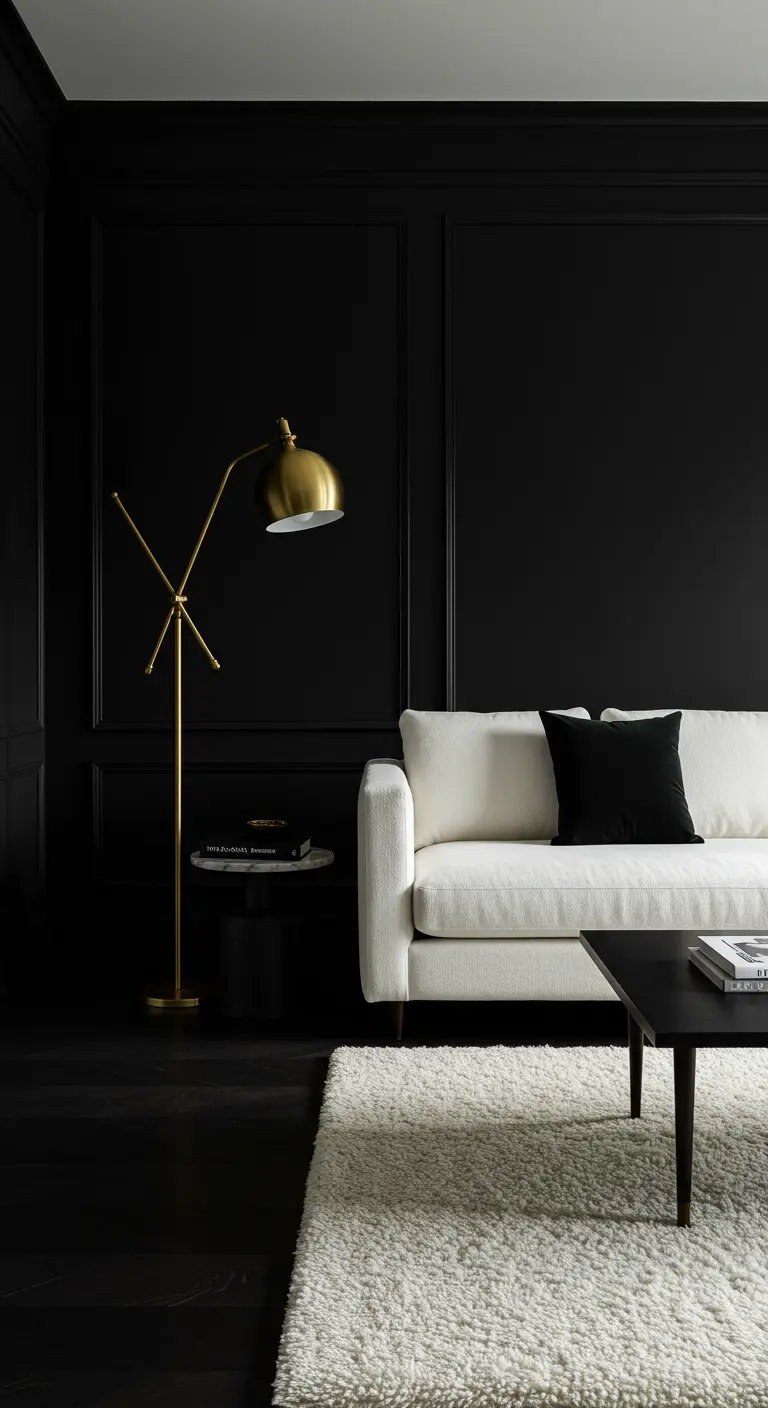
Break the rules of a strict black and white palette with a single, deliberate metallic accent.
In this moody, black-walled room, a sculptural brass floor lamp introduces warmth, glamour, and a touch of color.
This one move prevents the scheme from feeling too rigid and adds a layer of sophistication.
The warmth of the metal is echoed in the soft, inviting textures of the high-pile rug and the creamy bouclé sofa.
19. Classic Palette, Modern Details

Give a classic white kitchen a contemporary edge with carefully chosen hardware.
Simple white Shaker-style cabinets are timeless, but pairing them with modern, matte black hardware and a matching gooseneck faucet creates a crisp, graphic contrast.
Introduce a natural wood countertop on the island to add warmth and texture, preventing the black-and-white scheme from feeling too stark.
This detail thoughtfully connects the white cabinets to the light wood flooring.
20. The Deconstructed Canopy
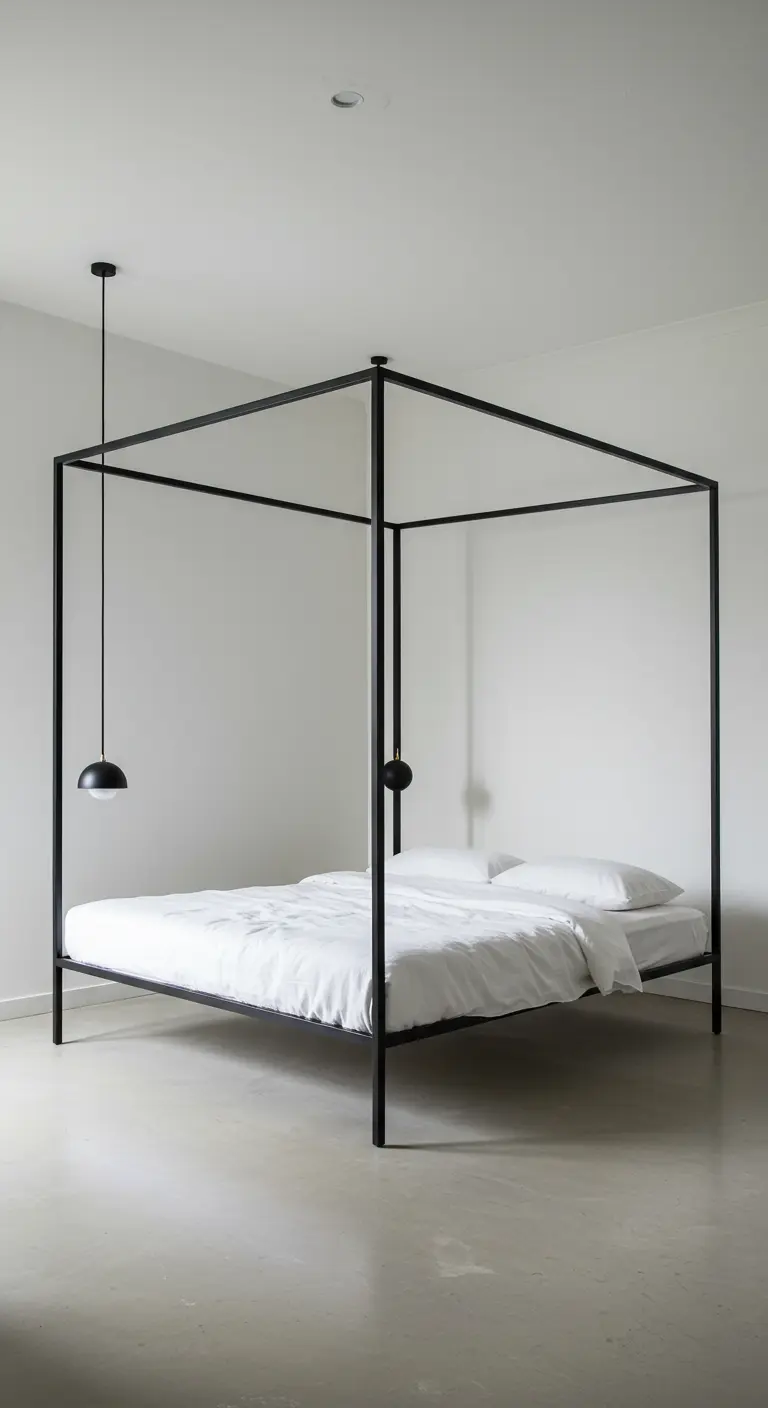
Evoke the romance of a traditional four-poster bed with a modern, minimalist interpretation.
This black metal frame canopy bed outlines the form without any of the visual weight, creating a ‘room within a room’ that feels both airy and intimate.
The clean, architectural lines are a statement in themselves, requiring no extra fabric or decoration.
Hang simple, spherical pendants asymmetrically within the frame for a final, artful touch.
21. Blurring the Lines to the Outdoors

Create a living space that feels intrinsically connected to the outdoors by using expansive, black-framed glass walls and skylights.
The thin black mullions act like picture frames, drawing the eye to the garden beyond.
Keep the interior palette spare—all-white floors and ceilings, light gray furniture—to ensure the vibrant green of the landscape provides the room’s primary color.
A few carefully chosen indoor potted plants help to seamlessly blend the indoor and outdoor environments.
